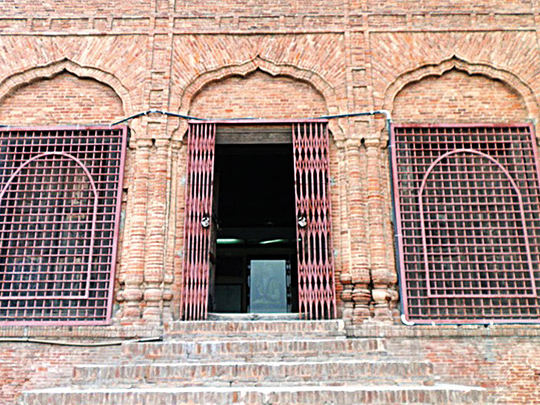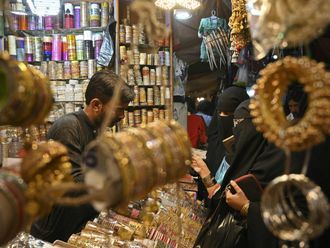
Lahore: The hall is dim with pools of dark spaces stretching into the shadows. Even though it is hot outside, the gallery’s interiors are cool and quiet, housing some of the most precious artworks in history — the Princess Bamba Collection.
Commissioned by Sikh rulers from European master artists, the paintings hang on the wall, each one spotlighted.
We are inside the Mai Jandan Haveli in the Lahore Fort, a repository of invaluable arts, crafts and beautiful paintings of the Sikh rulers and their families. Located on the upper side of the Sikh Gallery, the Haveli is now open to the public. The Princess Bamba Collection comprises 14 watercolours, 18 oil paintings, 22 ivory paintings, 10 metallic objects, 17 photographs, and seven miscellaneous artefacts.
The paintings belonged to Maharaja Ranjit Singh, founder of the Sikh ruling dynasty of the Punjab, and his son Maharaja Dalip Singh.
For a long time the collection remained a family treasure and in later years it was inherited by Dalip Singh’s daughter Princess Bamba Jindan, who died in 1957.
A majority of the pieces were removed from the Sikh Darbar in Lahore and taken to England after the British annexed Punjab in 1849, 10 years after the death of Maharaja Ranjit Singh in 1839.
Storied collection
Anjum Dara, curator of the Sikh Gallery and the Princess Bamba Collection, said that the present collection was acquired by the government of Pakistan and declared a national asset by its Department of Archaeology.
- Anjum Dara | Curator
“Dalip Singh was nine years old when British took over Punjab in 1849. They initially kept the boy in Lahore, but due to fear of rebellion, they sent the young king to Fateh-garh (in present-day India),” Dara said. “Maharaja Ranjit Singh’s wife, Rani Jindan, moved to Nepal where she put up a strong resistance to British rule. She is believed to have headed off to the forests; there is no documented record of her last whereabouts.
“In 1856, the British took Dalip Singh to England. There, he married a European girl in 1864 and had six children, including Princess Bamba Sophia Jindan Dalip Singh (born September 29, 1869), who was the eldest.”
After her childhood in England, Princess Bamba moved to Lahore, her father’s birthplace, living there till her death. On her deathbed, she gave the artworks to Pir Karim Bakhsh Supra, who later sold it to the Pakistan government.
Former Pakistani parliamentarian Ramesh Singh Arora said the Princess Bamba Collection is close to the heart of every Sikh. “It is matter of pride for us Pakistanis that these paintings are in Lahore, which was the capital of Maharaja Ranjit Singh’s empire. The Maharaja was called the ‘Lion of Punjab’ and no doubt he was deserving of this honour,” Arora said.
Former Secretary of the Punjab Archaeology Department, Chaudhry Ejaz, said the works should be shown to the world. “These priceless treasures can promote tourism as Sikhs from across the world would be keen to see these masterpieces,” Ejaz said.
The unique collection gives an insight into the rich, glorious period of Maharajah Ranjit Singh, marked by a secular vein. Sikhs, Gurkhas, Punjabi Muslims and Pathans all served in his army. Noteworthy among the paintings is Darbar of Maharaja Ranjit Singh by August Theodore Schoefft, a Hungarian-German artist, for its unusually large sized canvas, I92 x 100 inches, which illustrates a Sikh court.












